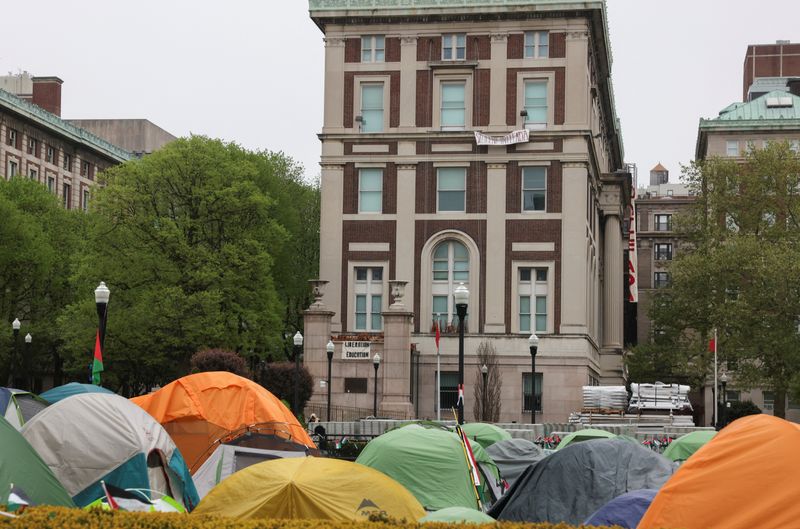By Joseph Ax
(Reuters) -The building that Columbia University protesters seized early on Tuesday morning, Hamilton Hall, has a history of student takeovers over the decades.
The current demonstration on the Ivy League campus in Manhattan echoes those past protests, almost all of which took place in April as well. Some activists have said they studied them for lessons on tactics and strategy.
The eight-story 1907 campus hub today houses undergraduate classrooms as well as the classics, Germanic languages and Slavic languages departments, according to the Columbia website. Here are some of the notable instances when past student activists occupied Hamilton Hall:
1968
Hundreds of students held a demonstration on April 23, 1968, to protest the Vietnam War as well as Columbia's plans to build a gymnasium in nearby Harlem that activists claimed would effectively be segregated.
After marching to the gym construction site and tearing down protective fencing, protesters returned to campus and barricaded themselves inside Hamilton Hall, preventing the acting dean from leaving his office, according to an online exhibition curated by the university's libraries.
By the next morning, Black students – who renamed the hall "Malcolm X Liberation College" – asked white students to leave to ensure their specific grievances were heard. The white students moved their demonstration to other buildings on campus.
After a week-long occupation, the university called in the police. The Black students at Hamilton Hall left peacefully, heading straight to police vans waiting to take them into custody; students in other buildings, however, violently clashed with officers as they were dragged outside. Many students suffered injuries, and hundreds were arrested.
1972
Students locked themselves inside Hamilton Hall for a week in April 1972 during more antiwar protests, using furniture to barricade the doors.
Police officers cleared the building after entering in the early morning via an underground passageway. No one was injured or arrested, according to a contemporaneous New York Times account.
1985
About 150 students blockaded Hamilton Hall for nearly three weeks in April 1985, demanding that the university end indirect investments in South Africa because of the country's racist apartheid policy.
The protesters, who renamed the building "Mandela Hall" after then-imprisoned opposition leader and future South African President Nelson Mandela, ended their demonstration on the same day that a judge ordered students to remove chains and padlocks from the hall's front doors.
1996
About 100 students occupied Hamilton Hall for four days to demand the university create an ethnic studies department, while a handful of students also staged a hunger strike that lasted two weeks.
The protesters and the school eventually reached a settlement to end the occupation, which included a pledge from Columbia to hire more minority faculty members and to give dedicated space to Asian and Hispanic studies, according to a Times article published at the time.
